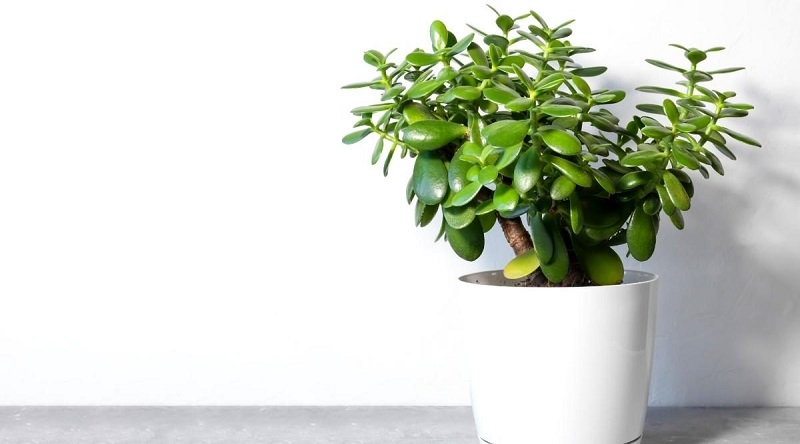
How to care for the jade plant
One of the most recommended plants that we can have at home. And what is very popular in homes around the world is the jade plant or jade tree. According to tradition, this plant will attract fortune and riches. In addition, it is one of the plants that helps the most to purify the air inside buildings. So it will also allow us to breathe a healthier atmosphere.
If you have decided to get one for your home and want to know how to take care of the jade plant. And thus learn about some of its most important characteristics, keep reading and we will tell you.
What kind of plant is jade
The jade plant, whose scientific name is Crassula ovata, is a plant that today can be found in many parts of the planet, although its origin must be found in southern Africa. It is an evergreen succulent plant, characterized by having a strong stem that can grow to become woody and jade green leaves (which gives it its popular name) that, in cases of receiving a lot of light, can reach turn pinkish at the tip. Interestingly, these leaves grow in opposite pairs along the stem and branches, and under the right conditions, this plant has white flowers that appear from early fall to early winter.
Jade Plant Watering
The jade plant or tree, being a succulent plant, needs little water to be healthy. In fact, it is best to water it only when its soil is completely dry, avoiding watering it when the soil is still wet and, above all, avoiding the presence of excess water in the lower plate of the pot. If you have put one in it. In reality, an excess of water could negatively affect the plant, which would lead to the rotting of the roots and the fall of the leaves, usually starting with those closest to the soil itself.
In this way, it is best to water it only when the soil is dry. In winter this can be once a week or so. While, in summer, more frequent watering can be done, between two and three times a week if there is a high evaporation of the water from the pot. However, when in doubt, it will always be better to be short of water than to go too far.
Jade tree light
On the other hand, another aspect that requires attention when caring for a jade plant is light. The jade plant needs to be located in a place where it has at least 4 hours of light a day. However, it is a plant that does not tolerate direct exposure well. When this happens, its leaves end up burning and they fall off. Before this happens, they usually show pinkish colorations. Especially in the final part of the leaves. When this happens, it is a clear indication that the jade plant is getting too much light, or at least too much direct light.
Cleaning and pruning
Another important element when caring for the jade plant is keeping it clean. In this sense, it is essential to remove the dry, fallen, or bad leaves. Since their rotting could negatively affect the plant. Likewise, in the event that you want to carry out pruning. This can be done at the end of winter. Although, when it is done, it will be very important not to excessively touch the stem or the part closest to the ground, since it is the most sensitive area of the plant and could affect its health too much. The most advisable thing, in case you want to prune it, will be to do it in the highest and strongest branches.
How to reproduce the jade plant
If the jade plant is to reproduce, it will be necessary to facilitate flowering. The flowering of the jade plant occurs in autumn. Therefore, if we want to favor the appearance of flowers, it is best to stop watering them during this period or, at least, do it with less intensity. In this way, the combination of lack of water, less light, and colder days will stimulate the plant to develop flowers.
However, if you want to reproduce the jade plant to have more than one, a much easier option to achieve it will be through cuttings. To obtain a cutting of the jade plant, all you have to do is cut a branch of the plant and put it in water for two or three days. After that time, even if the branch has not developed roots, the plant must be transplanted to a pot with abundant soil and, if possible, that has organic humus, and water it abundantly. After having transplanted it, we will proceed to water with the normality of an adult jade plant. This process can be slow, like the growth of the jade plant itself. However, if it is done well, after two or three months. It will be possible to verify that the plant begins to grow and develop at a faster rate.




